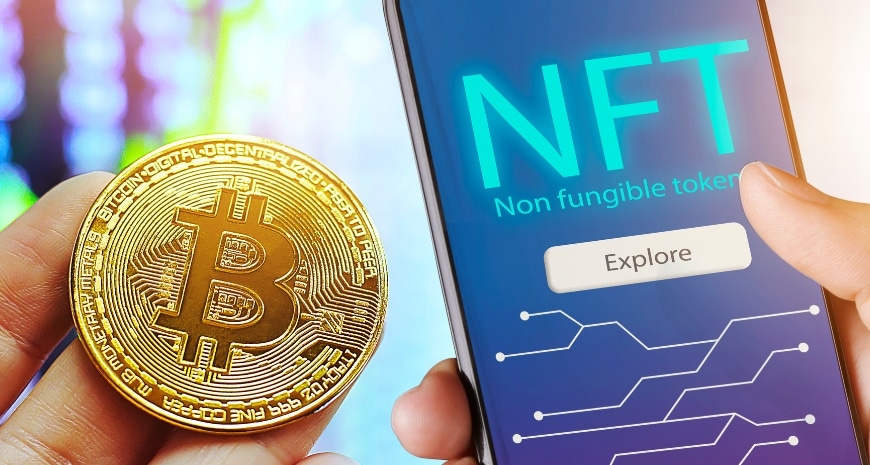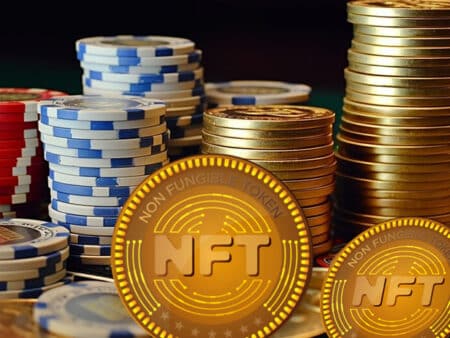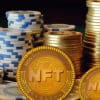

The cryptocurrency industry has seen many innovations in recent years, especially about non-fungible tokens (NFTs). At the same time, blockchain-based gaming has grown significantly, providing different chances and experiences for investors and players. In this context, the incorporation of NFTs into crypto dice games has become an intriguing aspect that combines the thrill of conventional dice games with the distinctiveness and ownership potential of NFTs. This article explores the mechanics, advantages, and possible ramifications of NFT integration in cryptocurrency dice games, delving into this fascinating field.
Exploring NFTs in Crypto Dice Games
Non-fungible tokens (NFTs) are distinct digital assets that stand out from other tokens or assets on the blockchain because they are indivisible and irreplaceable. Each NFT has unique qualities and attributes, unlike cryptocurrencies like Bitcoin or Ethereum, which are replaceable and fungible. These attributes are frequently connected to virtual game assets, collectibles, or digital artworks.
Due to their ease of use, thrill, and potential for large wins, dice games have long been a mainstay in both brick-and-mortar and virtual casinos. Due to distributed ledger technology’s transparency, security, and decentralization, crypto dice games have become increasingly popular since their introduction. Players usually bet cryptocurrencies on the results of dice rolls in these games, with payments decided by preset rules and algorithms.
Benefits of NFT Integration in Crypto Dice Games
Incorporating NFTs into cryptocurrency dice games adds a fresh perspective, changing the gameplay and opening up new avenues for creators and players. Players can now employ NFTs in their gaming instead of only wagering cryptocurrency. These NFTs might stand in for special objects, characters, or other game components, giving them real worth in addition to their visual appeal.
A careful consideration of game design and mechanics is necessary when integrating NFTs into cryptocurrency dice games. Game designers can create games in which participants stake NFTs as part of their wagers, and the results of the dice rolls determine the fate of these assets. On the other hand, NFTs can function as collectibles or in-game goods, offering players extra advantages or uses depending on their rarity or ownership. These NFTs are owned and transferred by smart contracts, maintaining security and openness throughout gaming.
There are a lot of cryptocurrency sites that can help bring more light to the NFT integration in crypto dice games. Some of the best cryptocurrency dice sites even provide detailed advice on how to work your way through NFTs in dice games.
NFT integration in cryptocurrency dice games: Advantages
- Tangible ownership: By granting players real ownership of in-game items through NFT integration, it is possible to trade and make money outside of the game.
- Enhanced player engagement: NFTs provide the gameplay with more depth and motivate players to gather uncommon items and invest more time in the game.
- Opportunities for the secondary market: By enabling players to purchase, sell, or exchange NFTs, a vibrant secondary market with room for growth is created.
- Unique game mechanics: Developers can add unique features and events that improve user interaction and gameplay using NFTs.
- Building community: When players get together to talk, trade, and show off their collections, NFT integration helps to create a sense of community.
- Value preservation: NFTs hold onto their scarcity and value over time, allowing players to protect and grow their investments.
Addressing Challenges in NFT Integration
A new age of creativity and invention in the gaming business is heralded by the incorporation of NFTs into crypto dice games. We may anticipate a rise in the variety and immersion of gaming experiences as developers continue to investigate the potential of NFT integration, driven by the special qualities of blockchain technology. Furthermore, NFT integration may make distinguishing between asset ownership and gaming harder, opening the door for creative economic models and decentralized gaming ecosystems.
However, there are various challenges to NFT integration. Some of them include :
- Scalability: Putting into practice scalable technologies to manage peak activity times and large transaction volumes.
- Interoperability: Ensuring NFTs travel seamlessly and that various blockchain networks and platforms are compatible.
- User Experience: Emphasizing simple and easy-to-use procedures for exchanging, purchasing, and utilizing NFTs in games.
- Security: Putting in place strong security measures to guard players’ money and transactions against fraud and other potential dangers.
- Regulatory Compliance: Complying with the law and keeping up with the regulations pertaining to gaming and digital assets.
- Market Volatility: Using hedging techniques, dynamic pricing algorithms, or stablecoin options to lessen the impact of price swings.
Conclusion
NFT integration into cryptocurrency dice games is an intriguing opportunity for investors, developers, and players since it unites two emerging phenomena in cryptocurrency. This inventive combination promises to change the gaming environment and reinvent the idea of digital ownership by fusing the simplicity and excitement of dice games with the uniqueness and ownership potential of NFTs. NFT integration in cryptocurrency dice games appears to have a bright future as blockchain technology grows, opening up new avenues for innovation, engagement, and value creation.







